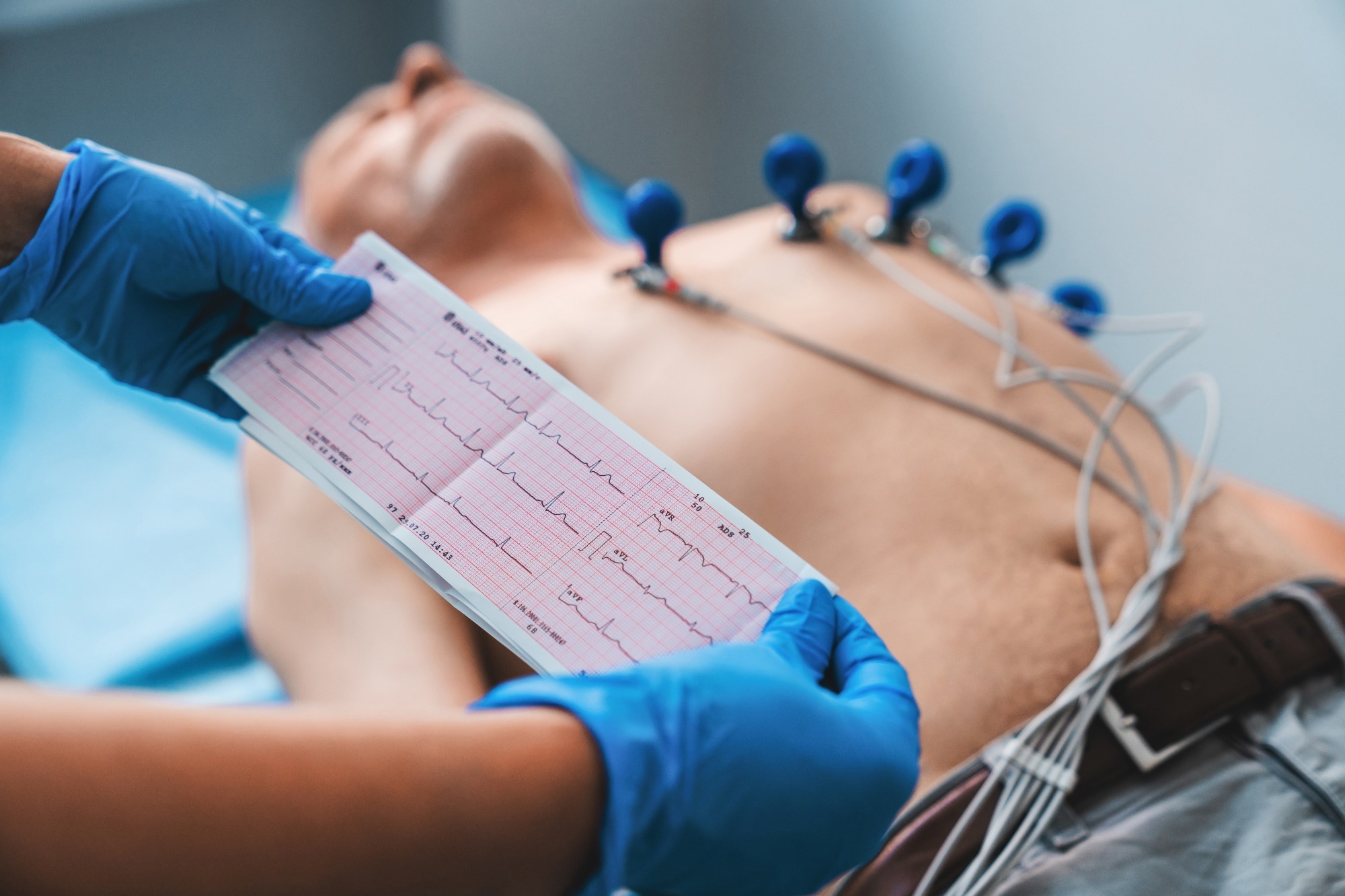In a recent study published in the journal Cell Reports Medicine, a team of researchers in China used an in vitro co-culture of adipocytes, cardiomyocytes, and sympathetic neurons to examine the independent associations of epicardial adipose tissue and the sympathetic nervous system with cardiac arrhythmia. They found that the adipose-neural axis plays an important role in arrhythmogenesis.
Study: The adipose-neural axis is involved in epicardial adipose tissue-related cardiac arrhythmias. Image Credit: Inside Creative House / Shutterstock
Background
Abnormalities in the formation and conduction of electric impulses due to electrical or structural abnormalities in the heart can lead to cardiac arrhythmias. These abnormalities could either be genetic or associated with acquired heart diseases. Studies have found that the sympathetic neurons have a significant role to play in cardiac arrhythmia pathogenesis. The activation of abnormal electric circuits and irregularities in the repolarization of the ventricles due to aberrant stimulation of the sympathetic nervous system have been linked to ventricular fibrillation and tachycardia, atrial fibrillation, and even cardiac death.
Recent studies have also found that epicardial adipose tissue is closely linked to the occurrence of atrial fibrillation, ventricular fibrillation, and ventricular tachycardia. Furthermore, since epicardial adipose tissue is adjacent to the myocardium with no tissue separating their contact, inflammatory cytokines and adipokines secreted by the epicardial adipose tissue can alter the electrical and cardiac structure. However, it remains unclear whether epicardial adipose tissue and sympathetic neurons interact and how their interactions impact arrhythmogenesis.
About the study
In the present study, the researchers circumvented the limitations presented by the dearth of appropriate models of human disease and the difficulties in obtaining and propagating adequate amounts of cardiac, neuronal, and adipose tissue by generating cardiomyocytes, adipocytes, and sympathetic neurons in vitro from stem cells and establishing co-culture models to study the interactions between epicardial adipose tissue and sympathetic neurons and their impact on cardiomyocytes.
Plasma samples were obtained from the peripheral vein and coronary sinus of 53 participants consisting of health controls and patients with paroxysmal or persistent atrial fibrillation. Epicardial adipose tissue was also obtained from patients with persistent atrial fibrillation who underwent open heart surgery.
Human pluripotent stem cells and induced pluripotent stem cells obtained from adipose-derived stem cells, human embryonic stem cells, and embryonic fibroblasts were used to derive the cell lines and cultures. A sequential induction strategy was used to derive sympathetic neurons, where neuronal cells were obtained from the human pluripotent stem cells and then cultured in a differentiation medium.
Adipose-derived stem cells were grown in adipocyte differentiation medium to carry out adipocyte differentiation and obtain epicardial adipose tissue. Quantitative reverse transcription polymerase chain reaction (qRT-PCR) was used to measure the expression of white, brown, and beige adipose tissue markers. A two-dimensional monolayer differentiation protocol was employed to derive cardiomyocytes from the human pluripotent stem cells.
Additionally, coronary computed tomography angiography was used to measure the thickness of epicardial adipose tissue. At the same time, ultrasound methods detected the thickness of subcutaneous adipose tissue in various regions of the body, such as the upper and lower abdomen, lateral and front thigh, distal triceps, medial calf, and brachioradialis.
Cell co-culture models were established in vitro to simulate the relationship between sympathetic neurons, epicardial adipose tissue, and cardiomyocytes, and ultrastructural and immunofluorescence analyses were used to study the interactions within the co-culture.
Results
The results showed that cardiomyocytes cultured with both epicardial adipose tissue and sympathetic neurons but not with either exhibited significant electrical abnormalities, arrhythmic phenotype, and irregularities in calcium ion (Ca2+) transient signaling.
Furthermore, the study found that leptin secreted by the epicardial adipose tissue might activate neuropeptide Y’s release by the sympathetic neurons. This neuropeptide is believed to bind to the Y1 receptor on the cardiomyocytes and create abnormalities in the heart rhythms by influencing the activities of calcium/calmodulin-dependent protein kinase II or CaMKII and sodium ion (Na2+)/Ca2+ exchanger.
Leptin is a hormone that regulates various processes, such as neuroendocrine function, metabolism, homeostasis, and energy expenditure. It also modulates the sympathetic outflow through the lumbar, adrenal, and renal sympathetic nerves, stimulating the cardiovascular system. The sympathetic activity of leptin also results in increases and decreases in heart rate and modulation of the electric properties of the heart.
However, the results showed that treatment of the cardiomyocytes with leptin or the epicardial adipose tissue alone did not alter the cardiomyocyte rhythms, and leptin had an arrhythmogenic effect only in a co-culture with sympathetic neurons. Furthermore, treatment with neutralizing antibodies against leptin or inhibitors of the Y1 receptor, Na2+/Ca2+ exchanger, or CaMKII could partially block the arrhythmic phenotype in cardiomyocytes.
Conclusions
Overall, the findings indicated that interactions between epicardial adipose tissue and sympathetic neurons result in an arrhythmic phenotype in cardiomyocytes. The study showed that this phenotype is caused by leptin secreted from adipocytes stimulating the sympathetic neurons to release neuropeptide Y. This neuropeptide binds to the Y1 receptor and influences the activity of CaMKII and the Na2+/Ca2+ exchanger, causing abnormal cardiac rhythms.
Journal reference:
- Fan, Y., Huang, S., Li, S., Wu, B., Zhao, Q., Huang, L., Zheng, Z., Xie, X., Liu, J., Huang, W., Sun, J., Zhu, X., Zhu, J., Xiang, A. P., & Li, W. (n.d.). The adipose-neural axis is involved in epicardial adipose tissue-related cardiac arrhythmias. Cell Reports Medicine. DOI: 10.1016/j.xcrm.2024.101559, https://www.cell.com/cell-reports-medicine/fulltext/S2666-3791(24)00251-9
